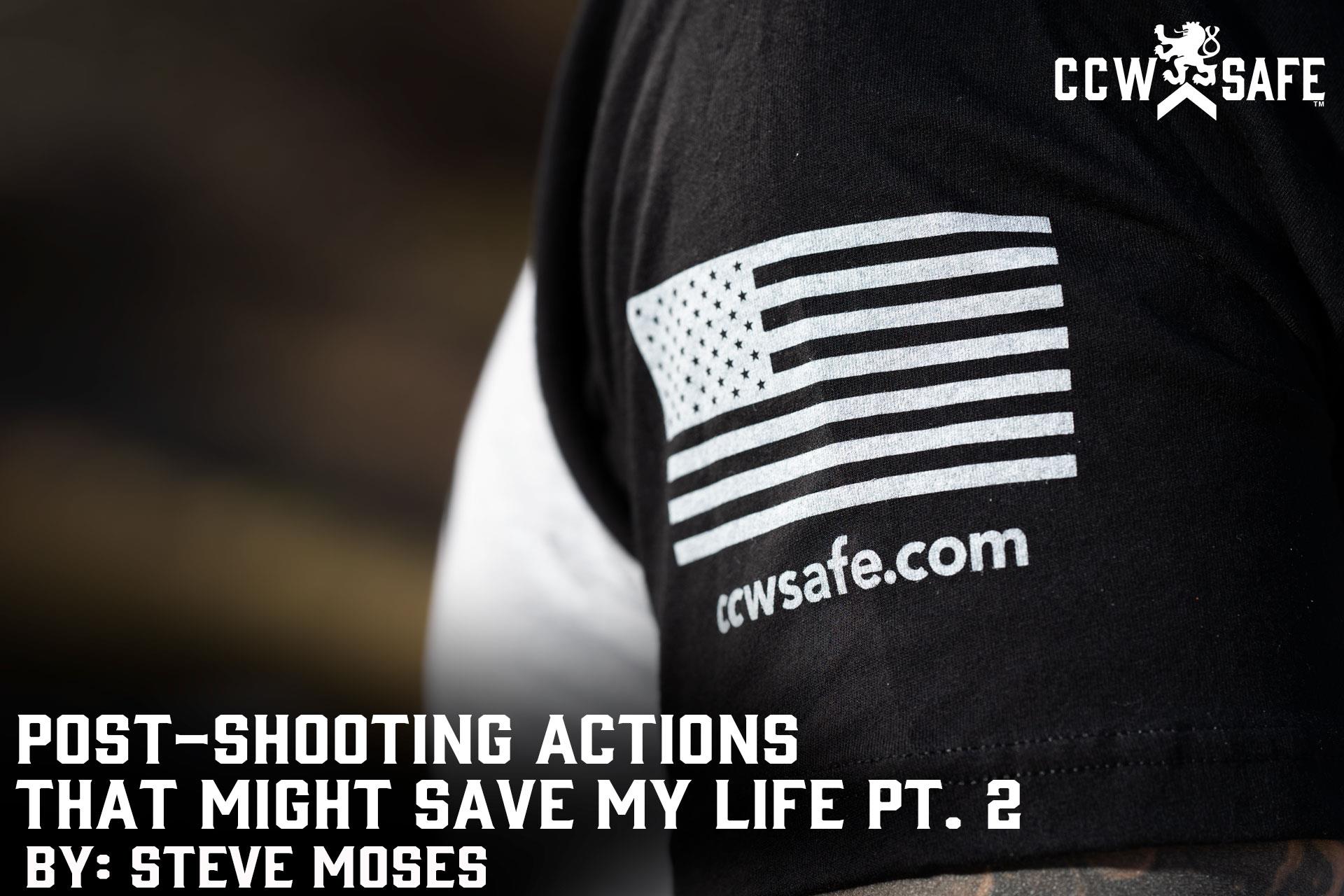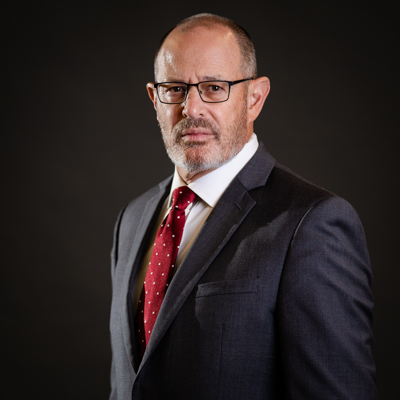
Posted on July 26, 2021
POST-SHOOTING ACTIONS THAT MIGHT SAVE MY LIFE PT.2
On June 21st in Arvada, Colorado Ronald Troyke drove to the Olde Towne Square downtown area armed with a shotgun and rifle. When Officer Gordon Beesley was dispatched to the scene in response to a suspicious person call and began searching the area on foot he was stalked by Troyke and then shot to death with a shotgun. After firing additional rounds, Troyke returned to his parked vehicle, exchanged his shotgun for an AR-15 rifle, and then headed back towards the Olde Towne Square. Before he could harm anyone else, he was intercepted by concealed carrier John Hurley. Hurley shot Troyke, ending the killing spree before more lives were lost. Sadly, Hurley was then killed by a responding police officer who mistook Hurley for the active shooter after Hurley picked up the killer’s rifle.
Part One of this article touched on actions that concealed carriers might consider taking in order to minimize the chances of being mistaken as an active shooter if they find themselves in a similar situation. The following actions were discussed:
- Do I choose to get involved, or do I have to get involved?
- If I need to rush to the scene I may be best served by keeping my handgun holstered with my hand on the grip or in a low-profile position like compressed low ready.
- I am not going to approach the shooter after he or she has surrendered or been shot and apparently incapacitated, with the one exception being that I may have to close distance in order to get to an injured third party. If so, I will never turn my back on the shooter and do what I can to prevent others from thinking that I am an active shooter also.
- I am going to leave the shooter’s gun alone. This is never truer than when it is a rifle or shotgun. One exception might be that I must leave the scene in order to get to other family members or loved ones are and I am concerned that the shooter might recover and then follow me and shoot me in the back. If I must take the long gun with me, then I will want to hold it in such a manner that that reduces the odds that I will be mistaken for the shooter and fired upon.
Part Two of this article concludes with a discussion of eight more actions that might assist me in not being mistaken for an active shooter and possibly fired upon.
- I am going to move to a better position. I prefer a position that furnishes me with cover from both the shooter as well as those areas from which responding law enforcement officers and other concealed carriers might arrive. In addition, I want to be in a position that does not obscure my view. Crouching behind a short wall or the front of a vehicle with my head down is a good way to get flanked or otherwise surprised by the sudden appearance of another person whether dangerous or not.
- I am going to “cache” my handgun (holster it or go to Position Sul or compressed low ready) in order to minimize my threat profile. A reasonable compromise might be to holster the handgun but maintain a firing grip with my dominant hand so that I can quickly draw and shoot if necessary at a moment’s notice.
- I am going to scan for other shooters, responding law enforcement officers, and other concealed carriers while never losing complete visual contact with a downed shooter or areas in which he or she may hide or emerge from.
- I am going to check myself and anyone else with me for bullet wounds. Life-threatening wounds need to be addressed immediately, and this is one of the reasons that I almost always carry a tourniquet, package of QuikClot gauze, and a vented chest seal with me. Automobile or work-related injuries are another.
- I will call 911 or request that someone in close proximity does so on my behalf. By now, the chances are good that 911 is receiving calls from bystanders and witnesses. I suggest giving 911 only critical information including making sure that they understand that an armed concealed carrier is on the scene waiting for law enforcement to arrive and that medical assistance may be necessary. Identifying myself (or having others identify me) as the responding armed concealed carrier and being “a white middle-aged male wearing a light blue shirt and tan cap” might go a long ways toward ensuring that responding officers have been advised that not all of the armed persons on the scene that they may observe upon arrival are lethal threats that need be engaged immediately.
- I want to have a plan in place when law enforcement officers arrive. This includes securing my handgun whether by holstering it, placing it on the ground and stepping away from it, or even placing it on the ground and stepping on it so as to prevent someone else from trying to grab it (which I might do if there are others nearby). Ideally, I want the arriving officers to be able to see that my hands are empty and that I am not pointing my handgun directly at a person or in a manner that suggests that I might shoot someone. If the situation is so dire that it is too risky to holster the handgun, then retaining it in a compressed low ready position is an option. Yelling ‘what do you want me to do?’ to the officers as they exit their vehicle may be a good idea.
- I need to be prepared for what may take place once law enforcement officers start to secure the scene. I will need to act upon my plans and choose the one most appropriate to the current circumstances and be prepared for a variety of commands that may range from no direction to being ordered to assume a prone position and then handcuffed and possibly arrested. It is possible that I may find their commands difficult to understand and need to remember that they are concerned about being injured or killed. What do I do if multiple officers arrive and start simultaneously issuing commands that conflict with each other such as “drop the gun…don’t move…show me your hands…get down?” My first act would be to cease all movement (my handgun, if out, should already be pointing towards the ground) and then say “okay, okay” and slowly place my handgun on the ground and then take a step away from it while holding my hands away from my body with fingers splayed. Under no circumstances am I advising other concealed carriers to necessarily take the same action. My personal and admittedly limited experience is that these actions may cause the responding officers to start believing that they are gaining control of the situation, and that only one officer continues issuing commands. Simply dropping the handgun can accomplish the same thing, but if that is the action that I want to take I will mostly likely slowly extend my hand away from my body and then open my fingers and drop it. I want to avoid any quick actions while another person who thinks their life may be at risk is pointing a handgun at me while possibly having their finger on the trigger.
- I am going to prepare for the aftermath right now. As a matter of fact, I have been preparing for it for years by not posting social media that might make me an easy mark for a prosecutor (or personal injury attorney) intent on proving that I was looking for the opportunity to be a “hero” and legally shoot another person. I also acquired legal liability coverage from CCW Safe. The minutes and hours after being involved in such a traumatic event is not the ideal time to be shopping for an experienced criminal defense attorney whose fees I most likely will not be able to afford without wrecking my finances for the rest of my life (as well as my wife’s). And finally, I intend to tell the responding law enforcement officers that I did indeed shoot the active shooter because I believed that he or she was going to shoot me or other third parties and that I need to consult with my attorney before making any further statements. It may be difficult to not further elaborate but it is important that I do not give a statement as there is a high possibility that what I think took place during an extremely stressful event did not happen exactly as I thought it did at the time.
As always, nothing in this article should be taken as legal or even tactical advice. There are exceptions to everything, and none of us have the exact same level of skills, knowledge, training, tools, and other intangibles. Hopefully, this article simply encourages others to take stock of who they are today and who they want to be the day that an active shooter walks into their life.
 |
Steve MosesSteve Moses has been a defensive firearms trainer for over 26 years and is a licensed Texas Personal Protection Officer with 7 years of experience performing as shift lead on a church security detail for a D/FW area metro-church. Steve is a co-owner and Director of Training for Palisade Training Group, LLC based in Dallas, Texas. Moses is a retired deputy constable and spent over 10 years on a multi-precinct Special Response Team. He owns multiple instructor certifications, including Rangemaster Advanced Handgun Instructor and Defensive Shotgun Instructor, Red Zone Knife Defense Instructor and Adaptive Striking Foundations Instructor, Modern Samurai Project Red Dot Sight Instructor, and State of Texas Personal Protection Officer Instructor. Steve holds a BJJ Brown Belt in Relson Gracie Jiu Jitsu. He is a content contributor for CCW Safe and writes weekly articles on various subjects of interest to concealed carriers. Moses shoots competitively and holds an IDPA Expert rating. Steve is an annual presenter at the Rangemaster Tactical Conference. |